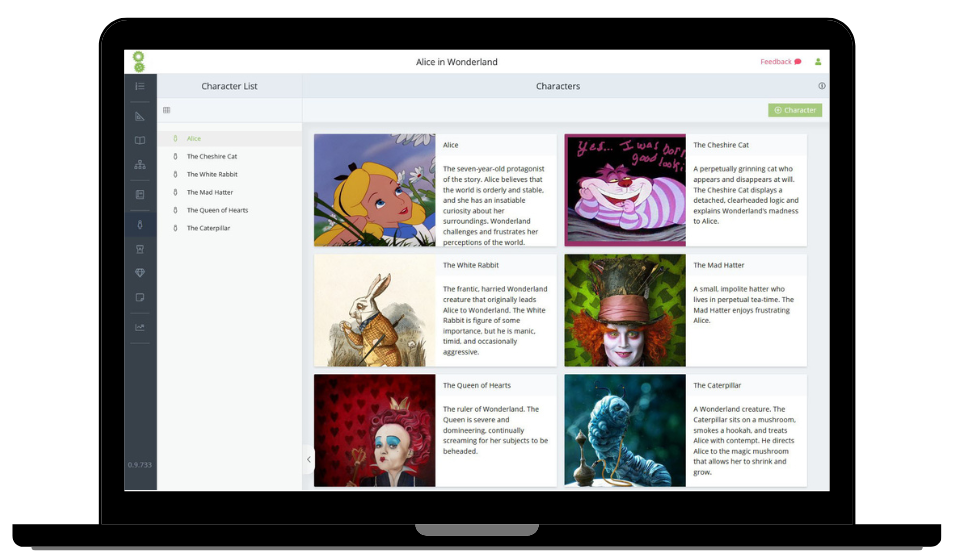
How to Write a Prologue That Sets the Tone and Captivates Readers
Guest Author: Dave Chesson
Whether you love them or hate them, prologues are frequently a big part of fiction, especially in certain genres like fantasy or science fiction.
A prologue can be a bit confusing. If it’s the first part of your book, why not just make it chapter one? What separates a prologue from a regular chapter, and why on earth would you want one?
These are some of the questions I’ll tackle in this post. Because while it’s not an essential part of your story, it can be a highly useful tool under the right circumstances.
Let’s dig in.
What is a Prologue?
The prologue is part of the narrative that comes before the first chapter.
It’s purpose is usually to set up something in the main story, provide some important background information, or establish the tone of the book.
They are only used in works of fiction.
More specifically, the word “prologue” comes from the Greek word “prologos”, which translates to “before word.” In a Greek play, this was always the first part of the narrative.
Do You Need a Prologue?
A big question that many authors have is, do you even need a prologue in the first place?
And this is a good question. A lot of readers actually don’t like prologues, and will skip over them if you have one. And even if they miss out on some important information by doing so, we can’t stop them from doing it.
But we canmake sure that we only use it under the correct circumstances.
Genres like Epic Fantasy tend to use prologues more often, but even that depends on the subgenre, as they are less common in YA fantasy, for example.
So the first step to knowing if you need a prologue is to look at the specificgenre you’re writing in. Are prologues common? What are they like? Study your competitors and get a sense of what you’re doing, and this can actually be the best indicator of what you should do.
That said, here are some reasons you might want a prologue:
- If your first chapter doesn’t accurately convey the tone of the entire novel
- If you have some information about the conflict of the story that you need to introduce near the beginning
- If you need to foreshadow an important event in the book
- If you have an important character you need to introduce that won’t be otherwise introduced in the first few chapters
- If the very beginning of your story doesn’t involve the main character
If you answered yes to any of those, it’s a good idea to consider a prologue. But if not, it’s okay to leave it out.
6 Tips for Writing a Prologue That Captures Reader Imaginations

Let’s assume you are going to write a prologue. What should you do next to make it the best prologue possible. Here are a few useful tips:
1. Set the Tone of the Genre
One of the most important roles that a prologue plays is that of establishing the mood and tone of the book.
Imagine if you write a huge epic fantasy, but your first chapter covers your main character on a farm, before the action has started and she’s been called on her epic quest.
This is often a problem that books have, where the first chapter starts at a place of relative calm, compared to the rest of the book. There’s little to no action, genre tropes, etc.
Your prologue should therefore do all of those things.
If your book has a lot of action in it, make sure the prologue has action. If your book has magic, make sure magic is used in the prologue. The same can be said for any major genre conventions: mystery, suspense, horror, romantic relationships, etc.
Now while you don’t want to overstuff your prologue with these things, you ultimately want to ensure that a reader who picks up the book and reads the prologue, will recognize what type of book it is.
2. Don’t Info Dump
Given what I said in tip #1, it can be easy for authors to want to cram their prologue full of everything a reader needs to know about the book.
Avoid doing this.
Instead, try to find ways to immerse the reader into the narrative, with as much left to context as you can.
You don’t want to confuse a reader, but a prologue should not be explaining most of the world that you’re presenting, and readers know this.
There’s usually a kind of understanding that more will be explained in the course of the novel, and the prologue is just a way of getting the readers’ attention.
You don’t want to leave the reader completely clueless, however, which is why you should take advantage of the old adage: show, don’t tell.
The best way to do this is by looking through the eyes of a character. That character would not describe everything that is going on, and explaining it all for the reader, because the character is not talking to the reader.
Instead, that character should be thinking in the context of the world, and this is an ideal way to scatter clues about the worldbuilding or the mythology, without having to explain it in long, boring paragraphs of exposition.
3. Avoid “Purple” Prose
A stumbling block that goes hand in hand with info dumping is “purple” prose. This is a term for prose that becomes overly flowery or unnecessarily wordy. For example:
He strode forward, like a raging lion about to pounce, the robes of his cloak billowing back and forth, back and forth, until I thought I might go mad with the grandeur of it.
It’s long, it uses unnecessary words, it’s overly dramatic. There may be occasions when a passage like this would work, but ordinarily you might want to stick with something like:
“He leapt forward, head held high, and his cloak rippling behind him.”
It’s common for writers to want to impress their readers at this early stage in the novel, or to make the plot seem extra important.
But keep in mind that a reader does not know you yet, they don’t know your characters, and they have no reason to want to stay put.
You have to get their attention fast and efficiently. Spending too much time creating flowery prose will not do that. And avoiding purple prose won’t just keep the reader engaged, but will help you finish writing your book faster.
4. Remember It’s Not the First Chapter
If your prologue could also be the first chapter of your book, then it should just be the first chapter.
In almost all circumstances, your first chapter should introduce your main plot, and will likely be where you introduce your main story.
Additionally, you want to make sure that both your prologue and first chapter are equally compelling.
While it’s possible that the full tone of your book might not be as apparent in chapter one (hence creating a need for a prologue), you still want it to start out with a good hook, and encourage readers to read more.
Using the prologue as your only hook will only result in disappointment once readers get to the “meat” of the story.
5. Keep it Short
A prologue should rarely be long. You’re trying to set up certain events in the novel, and establish tone. This shouldn’t take long.
The length itself can depend on the genre of the novel (fantasy is generally more forgiving of longer chapters), but overall it should not exceed the average length of the other chapters in your novel.
I would personally shoot for half the length of your regular chapters if you can.
6. Set Up Questions
Lastly, one great way to create an engaging prologue is to leave the reader with questions.
And the most important questions you can ask are questions related to the conflict of the novel. Conflict is ultimately what drives your characters, and it’s what encourages your reader to keep turning the pages (literally or on their Kindle device).
It’s impossible for me to give you specific examples here, as the types of questions you could ask will vary with every genre and every book. But just keep that conflict in mind.
The Bottom Line

Your ultimate purpose with a prologue should be to encourage readers to keep reading.
If your prologue does not accomplish that goal, you should consider revising or dropping it entirely.
Good, engaging questions, a tone that matches the appropriate genre, succinct prose, and presenting just enough information to be interesting, are all great techniques to engage the reader.
And if you can do that, you’re pretty much set.
Dave Chesson is the guy behind Kindlepreneur.com, one of the world’s largest book marketing websites. Having been a nuclear engineer for the US Navy, he’s a pretty large quantitative nerd who loves the numbers and understands the differences in how things work, especially inside of Amazon. You can find more about his type of analysis like his guide to getting book reviews or even some of his free tools on his site.
Unlock your writing potential
If you liked this article by the Novel Factory, then why not try the Novel Factory app for writers?
It includes:
- Plot Templates
- Character Questionnaires
- Writing Guides
- Drag & Drop Plotting Tools
- World Building resources
- Much, much more

